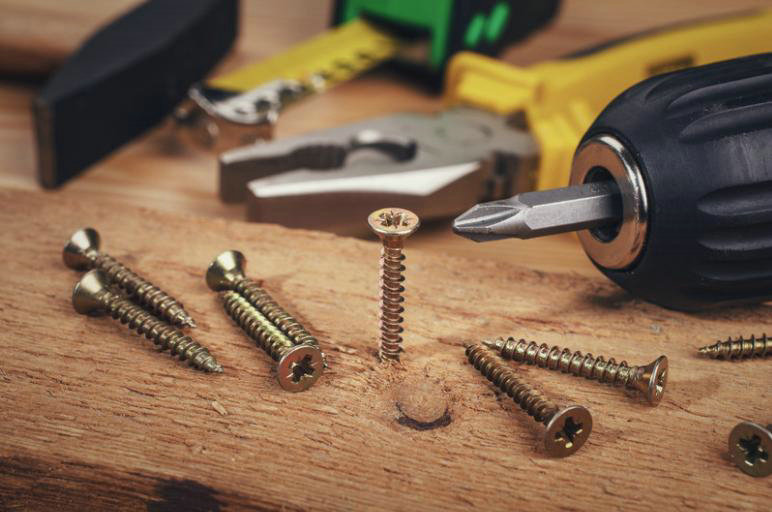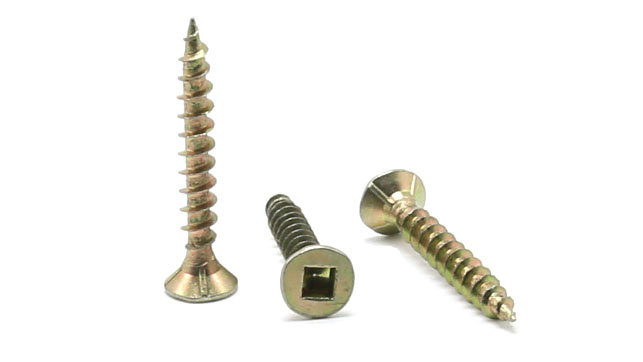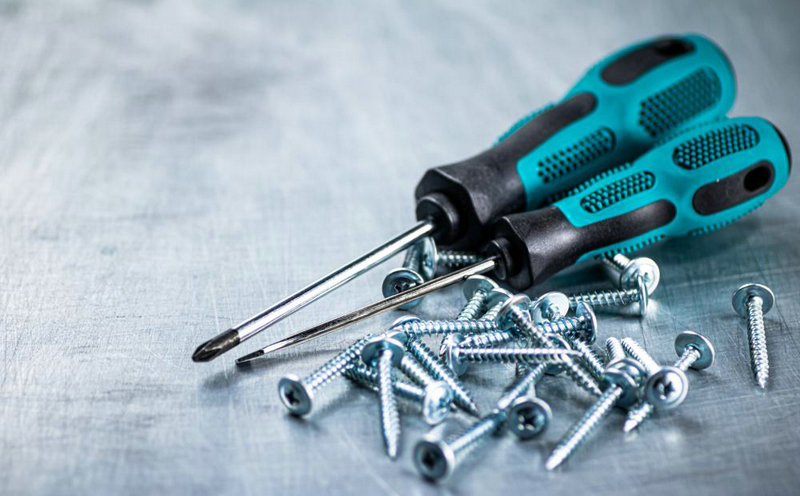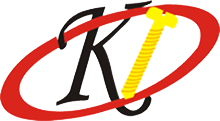
When selecting the right type of screw for your project, you might find yourself comparing wood screws to metal screws. These are two of the most commonly used fasteners in various construction and DIY projects, each with its own characteristics and advantages.
Wood screws are specifically designed for connecting pieces of wood. They typically have a sharp, pointed tip to help them penetrate the wood easily and a thread that’s designed to hold wood fibers securely.
On the other hand, metal screws are crafted to join metal components and are made from stronger materials to withstand the demands of metal rigidity. Unlike wood screws, metal screws often have a flat end and a thread that’s capable of cutting into metal when driven.
Understanding the differences between these screws is not just a matter of compatibility with materials but also involves factors like the strength of the joint required, resistance to corrosion, and the overall aesthetics of the finished piece.
Wood Screws

Wood screws, as the name suggests, are primarily used for fastening wood to wood. They are a staple in industries such as furniture manufacturing and construction. This section will delve into the specifics of wood screws, including their composition, uses, and unique characteristics.
Composition of Wood Screws
Wood screws are typically made from a variety of materials, including brass, steel, and stainless steel. The choice of material often depends on the specific application and environmental conditions. For instance, brass screws are often used in furniture due to their aesthetic appeal, while stainless steel screws are preferred for outdoor applications due to their corrosion resistance.
Uses of Wood Screws
Wood screws are widely used in the furniture and construction industries. They are ideal for joining wooden components due to their coarse threads and sharp points, which allow them to grip and hold wood fibers effectively. Some common applications include:
- Furniture assembly
- Cabinet making
- Deck building
- Residential construction
Corrosion Resistance of Wood Screws
While wood screws are prone to corrosion, they can be treated or coated to enhance their resistance. Common treatments include zinc or copper plating, providing a layer of protection against moisture and other corrosive elements. However, even with these treatments, wood screws may not be as corrosion-resistant as their metal counterparts, particularly stainless steel screws.
In summary, wood screws are a versatile and essential tool in woodworking and construction. Their unique characteristics make them well-suited to a variety of applications, but it’s important to consider factors such as the type of wood, environmental conditions, and the specific requirements of the project when choosing the right wood screw.
Metal Screws

Metal screws, often made from hardened steel or stainless steel, are designed for joining metal components. They are a crucial element in various industries, including automotive, aerospace, and industrial manufacturing. This section will explore the composition, uses, and unique characteristics of metal screws.
Composition of Metal Screws
Metal screws are typically made from hardened steel or stainless steel. The choice of material is often dictated by the specific application and environmental conditions. For instance, stainless steel screws are preferred for outdoor applications or in environments prone to moisture due to their inherent corrosion resistance.
Uses of Metal Screws
Metal screws are primarily used for joining metal components. Their fine threads and strength make them ideal for fastening thin sheets of metal or metal joints. Some common applications include:
- Automotive assembly
- Aerospace manufacturing
- Industrial machinery construction
- Metal fabrication
Strength and Durability of Metal Screws
Metal screws are generally stronger than wood screws and are capable of bearing higher loads. This makes them suitable for applications where shear and tensile strength are paramount. Additionally, metal screws made from stainless steel inherently resist rust, making them a preferred choice for outdoor or moisture-prone environments.
In conclusion, metal screws offer a robust and reliable solution for fastening metal components. Their strength, durability, and corrosion resistance make them a preferred choice in industries where metal-to-metal fastening is required. However, their installation process requires more precision and preparation compared to wood screws.
Sheet Metal Screws
Sheet metal screws are a special type of fastener designed specifically for use with sheet metal. They are characterized by the presence of exterior threading covering their entire length, which distinguishes them from other types of screws. This full threading allows sheet metal screws to effectively dig into and fasten sheet metal.
Composition of Sheet Metal Screws
- Sheet metal screws are typically made of strong materials like carbon steel and titanium, which provide strength and durability.
- They can also be made of stainless steel, which aids in long-term performance and durability.
- The screws are fully threaded, with sharp threads and a sharp tip.
Uses of Sheet Metal Screws
- Sheet metal screws are commonly used in the aerospace manufacturing industry to fasten metal parts.
- They are also used as industrial fasteners to hold objects together in devices such as screw tops for containers, screw jacks, vices, and screw presses.
- These screws can fasten metal pieces to other objects, or attach metal to another surface like aluminum, plywood, hard rubber, or wood.
Characteristics of Sheet Metal Screws
- Sheet metal screws have narrow threading compared to wood screws.
- They are self-tapping, meaning they can tap their own hole.
- The screws are available in various sizes, with the diameter indicated by a number between zero to 24.
- Some sheet metal screws are self-drilling, featuring a drill point end for use in thicker gauge steel.
- Other types of sheet metal screws require pre-drilling and feature a pointed tip.
In summary, sheet metal screws are versatile fasteners made of strong materials and designed to fasten metal pieces to other objects or surfaces. Their fully threaded shank, sharp threads, and sharp tip allow them to effectively cut through and fasten materials.
Key Differences
When selecting the appropriate screw for a project, understanding the differences in materials and coatings, installation techniques, strength and durability, corrosion resistance, and applications is crucial. Below is a detailed comparison of wood screws, metal screws, and sheet metal screws.
Materials and Coatings
| Feature | Wood Screws | Metal Screws | Sheet Metal Screws |
|---|---|---|---|
| Material | Brass, bronze, or steel | Similar metallic compositions to wood screws | Carbon steel, titanium (stronger than stainless steel) |
| Coatings | May have protective coatings | Can have coatings for corrosion resistance | Susceptible to corrosion but can be coated |
Installation Techniques
| Feature | Wood Screws | Metal Screws | Sheet Metal Screws |
|---|---|---|---|
| Self-Tapping | No, requires pre-drilled holes | Yes, can tap their own holes | Yes, can tap their own holes |
| Self-Drilling | No | No | Yes, some types have a drill point end |
Strength and Durability
| Feature | Wood Screws | Metal Screws | Sheet Metal Screws |
|---|---|---|---|
| Thread Design | Coarse threads, partially threaded shank | Finer threads that cover the entire body | Narrow threading, fully threaded shank |
| Load Capacity | Suitable for softer materials like wood | Designed for fastening metal, higher tensile strength | Strong, designed for fastening metal parts |
Corrosion Resistance
| Feature | Wood Screws | Metal Screws | Sheet Metal Screws |
|---|---|---|---|
| Inherent Resistance | Less corrosion-resistant | Varies, stainless steel offers good resistance | Carbon steel is strong but more susceptible to corrosion |
Applications
| Feature | Wood Screws | Metal Screws | Sheet Metal Screws |
|---|---|---|---|
| Primary Use | Fastening wood materials | Fastening metal to various materials, such as hard plastics | Securing metal parts, sometimes used in plastic, fiberglass, or wood |
| Industry | Woodworking, construction | General construction, automotive, aerospace | Aerospace manufacturing, industrial fastening |
Conclusion
In the world of construction and manufacturing, the choice between wood and metal screws is a critical one. These fasteners, though small, play a significant role in the integrity and longevity of structures and products.
Wood screws, made from materials like brass, steel, and stainless steel, are designed for woodworking applications. They are self-tapping, allowing for easy installation, and are commonly used in furniture making, cabinetry, and residential construction. However, they may require treatments or coatings to enhance their corrosion resistance.
On the other hand, metal screws, typically made from hardened steel or stainless steel, are used for joining metal components. They offer higher strength and corrosion resistance, making them suitable for applications in automotive, aerospace, and industrial settings. However, they require pre-drilled pilot holes for installation.
The choice between these two types of screws depends on a variety of factors, including the materials being joined, the desired strength and corrosion resistance, installation requirements, environmental conditions, and cost considerations.
In conclusion, understanding the differences between wood screws and metal screws is crucial for making informed decisions in various applications. Whether you’re a professional in the construction industry, a furniture maker, or a DIY enthusiast, choosing the right fastener can significantly impact the success of your project.
